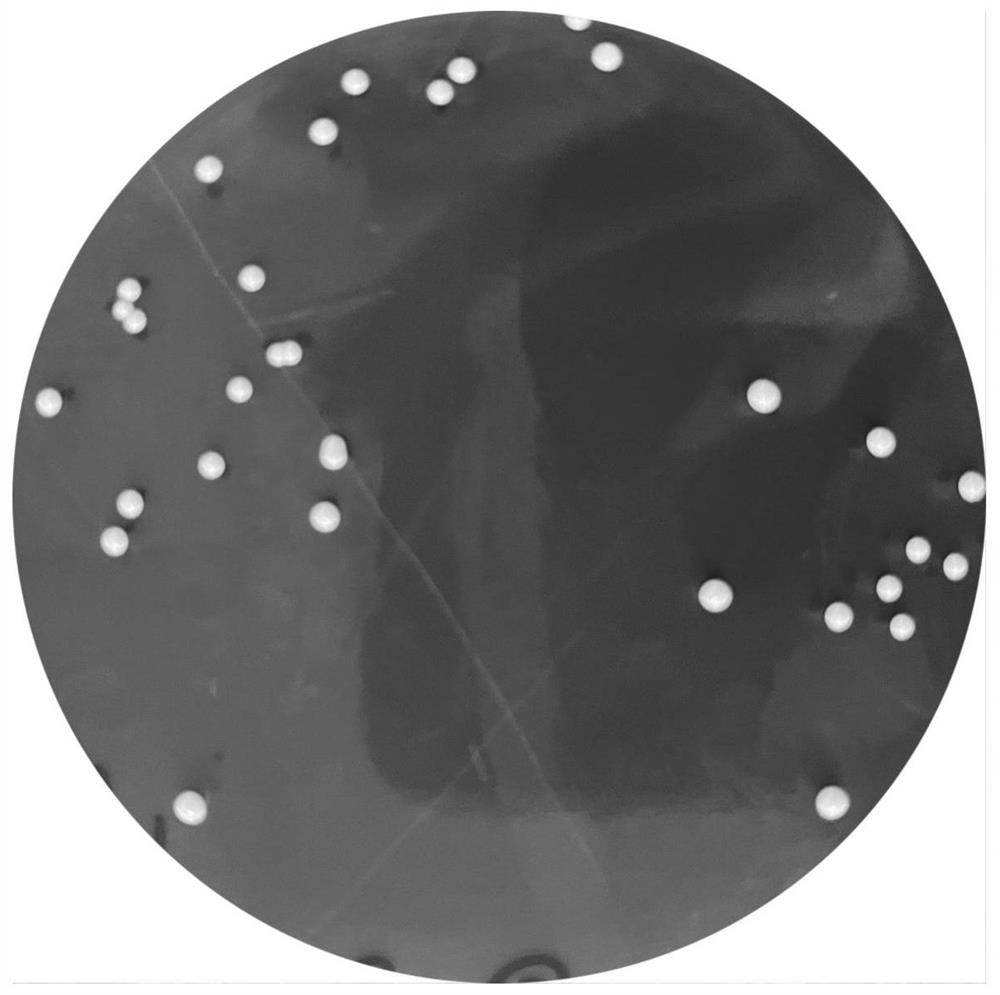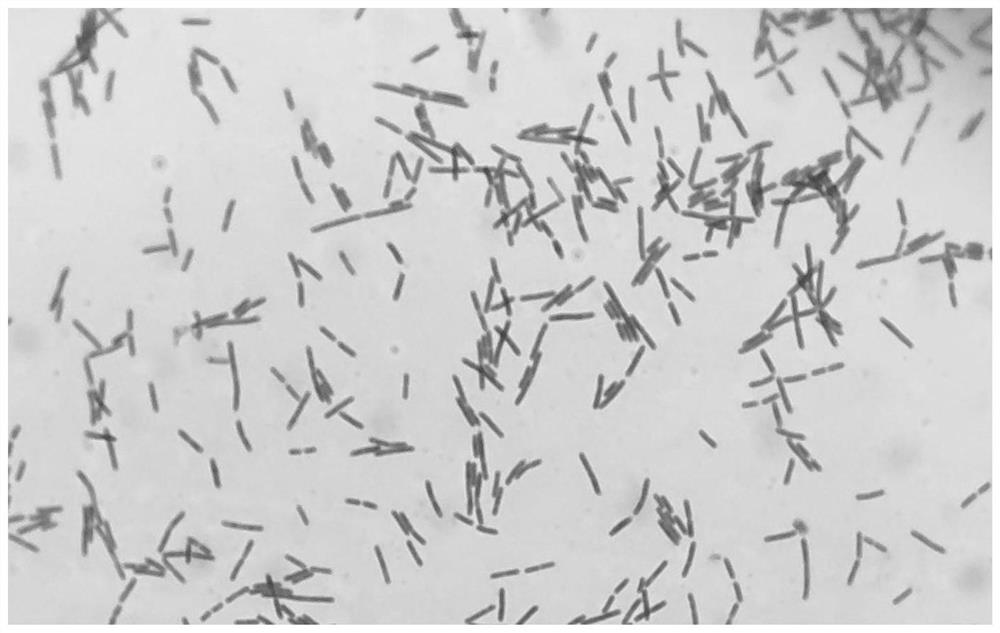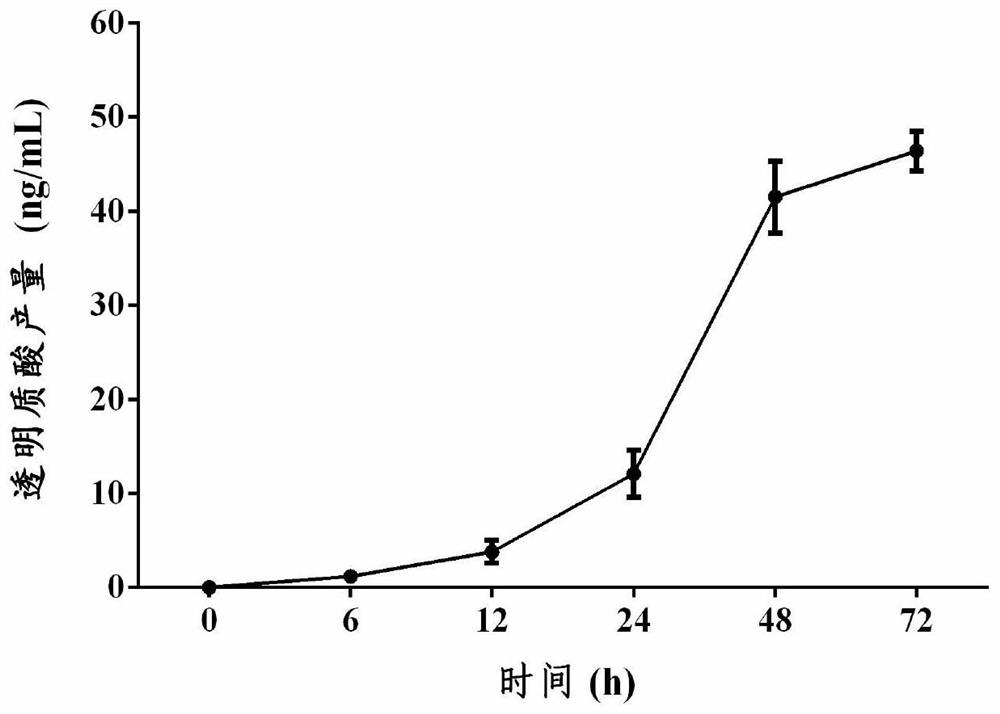Lactobacillus rhamnosus E2 for producing hyaluronic acid and application of lactobacillus rhamnosus E2
A technology of Lactobacillus rhamnosus and hyaluronic acid, applied in the field of microorganisms, can solve the problems of lack of scientific research evidence for the function of probiotics, affect the promotion of probiotics and their products, and rely on imports of probiotic strains, so as to promote the development of zebrafish The effects of repairing caudal fin damage, alleviating skin aging, and reducing ROS levels
- Summary
- Abstract
- Description
- Claims
- Application Information
AI Technical Summary
Problems solved by technology
Method used
Image
Examples
Embodiment 1
[0027] Example 1 Isolation, identification and preservation of Lactobacillus rhamnosus E2
[0028] (1) Separation: After gradient dilution, the feces of the long-lived elderly were inoculated into anaerobic blood agar medium and MRS solid medium respectively, and anaerobic culture at 37°C for 48 hours, and single colonies on the plate were picked and streaked to obtain pure colonies. . The pure colonies on the plate were inoculated into MRS liquid medium, cultured anaerobically at 37°C for 12-16h, added 20% glycerol, and stored in a -80°C refrigerator.
[0029] (2) Morphological identification of strains: The screened strains were Gram-stained and observed under a microscope. Gram-positive bacteria were purple and Gram-negative bacteria were red.
[0030] (3) Molecular biological identification of strains: Genomic DNA was extracted from the obtained strains, and the full-length fragments of 16S rDNA were amplified by PCR technology using 16S rDNA universal primers 27F and 149...
Embodiment 2
[0037] Example 2 Determination of the ability of Lactobacillus rhamnosus E2 to produce hyaluronic acid
[0038] Lactobacillus rhamnosus E2 was inoculated into MRS liquid medium, placed in an anaerobic workstation at 37 °C for 14 h, and the concentration of the strain was adjusted to 1 × 10 6 CFU / mL, inoculated in fresh MRS liquid medium by volume fraction 5%, placed in a full-temperature shaker at 37°C, 150r / min for 0, 6, 12, 24, 48, 72 hours, and then used ELISA kit. (Nanjing Herbal Source Biotechnology Co., Ltd.) to detect the hyaluronic acid concentration in the fermentation supernatant of the strain. Each time point was tested 3 times. The experimental data are represented by x±SEM data,
[0039] see the results image 3 . Depend on image 3 It can be seen that Lactobacillus rhamnosus E2 can be fermented to produce hyaluronic acid after 6 hours of inoculation in the medium, and almost reaches the saturation concentration after 72 hours, and the final hyaluronic acid p...
Embodiment 3
[0040] Example 3 Preparation of Lactobacillus rhamnosus E2 fermentation supernatant (extracellular secretion) and bacterial suspension (cell)
[0041] The Lactobacillus rhamnosus E2 was activated and cultured and then inoculated into MRS liquid medium. After culturing at 37 °C for 15 h, the concentration of fermented bacteria was adjusted to 1 × 10 7 CFU / mL, 4°C, 6000r / min centrifugation for 10min to obtain the culture supernatant and bacterial cell precipitate, the supernatant liquid was filtered through a 0.22μm filter to obtain the fermentation supernatant (extracellular secretion); After washing, the cells were resuspended in PBS, and the cell concentration was adjusted to 1 × 10 7 CFU / mL to obtain bacterial suspension (cell).
PUM
 Login to View More
Login to View More Abstract
Description
Claims
Application Information
 Login to View More
Login to View More - R&D
- Intellectual Property
- Life Sciences
- Materials
- Tech Scout
- Unparalleled Data Quality
- Higher Quality Content
- 60% Fewer Hallucinations
Browse by: Latest US Patents, China's latest patents, Technical Efficacy Thesaurus, Application Domain, Technology Topic, Popular Technical Reports.
© 2025 PatSnap. All rights reserved.Legal|Privacy policy|Modern Slavery Act Transparency Statement|Sitemap|About US| Contact US: help@patsnap.com



